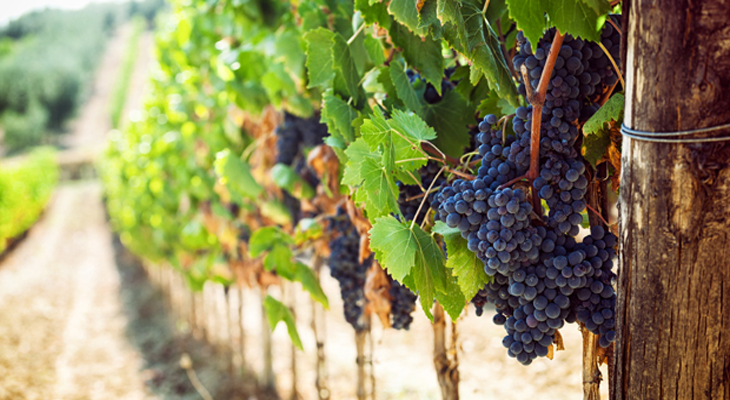
“What happened here?” Jess slows the car on a dusty gravel road. We are passing a vineyard in the heart of Italy and there are thousands of ripe grape clusters lying on the ground below the vines, row after row. He stops the car so we can take a closer look.
“Maybe they’re coming through later to gather them,” I say, and bend down to pick up a cluster. The grapes are perfect, plump, and full of juice. We garden and live on a farm and the idea of these grapes withering in the sun is hard to take. I can’t imagine letting any of my good produce go to waste.
We wave down two workers across the road, and between our broken Italian and their fragmented English, along with a good dose of sign language, they tell us that for every three clusters, a fourth is cut off, which results in the best quality of wine. We must know more, so we pull into the vineyard office and learn they cut the fruit one month before harvest, so the remaining clusters have more color and taste. This process yields an award-winning wine.
Jesus talked about pruning, but I never envisioned that meant the ripe fruit. The dead wood and even the green vines that trail off in unwanted directions, sure. But the actual fruit? I hope not, because something about that scene unsettles me.
Back at our apartment I look up the scripture and sure enough, the winery is onto something. Jesus said in John 15:2 “Every branch in me that does not bear fruit he takes away, and every branch that does bear fruit he prunes, that it may bear more fruit.” The fruit bearing vines do get pruned, and that may even mean after they’ve born fruit.
I think about my own life, and even the reason we are in Tuscany. It was partly so I could research and work on a book for a couple of weeks, but it was also because I was bone-tired, body, mind, and spirit. Weary with grief, overworked, pulled between an aging mother and other family members, and a looming fiftieth birthday.
Something in my life needs to change, but what and how? To cut the equivalent of good, beautiful, and tasty fruit must demand a great deal of courage.
If I approach my life like the garden, then it appears there are three steps to the pruning process.
–The first step is to clear out the deadwood. What are the things that are simply in the way of your growth and serve no good purpose at all?
–The second step is to snip those live vines and branches that are trailing off in directions that are not allowing the vine (you) to focus all your energy on producing fruit.
–The final step, and likely the most painful, is to cut some of the fruit so that what remains can be the best. In my experience, this seems overwhelming when viewed with all the deadwood and trailing vines still in place, but after step one and two, and with God’s help in discernment, the fruit that needs to be cut becomes clear.
Even then, it takes courage, but the sweet and best wine is worth it.
***
The above excerpt is taken from Restored in Tuscany by Angela Correll. This powerfully authentic story follows her journey of restoring an ancient Italian villa to its former glory. In the process, she also finds renewal for her weary heart.

Leave a Reply